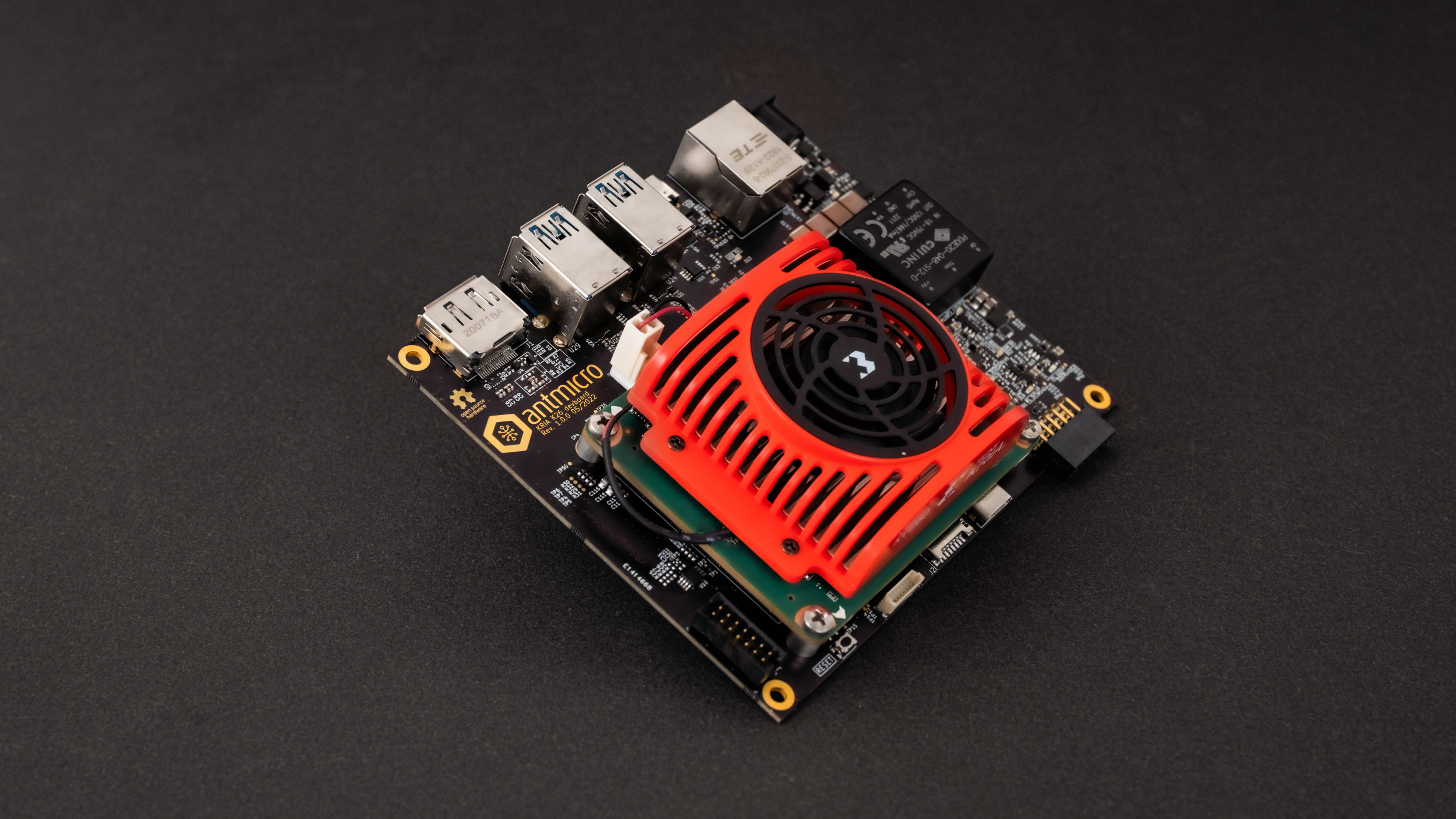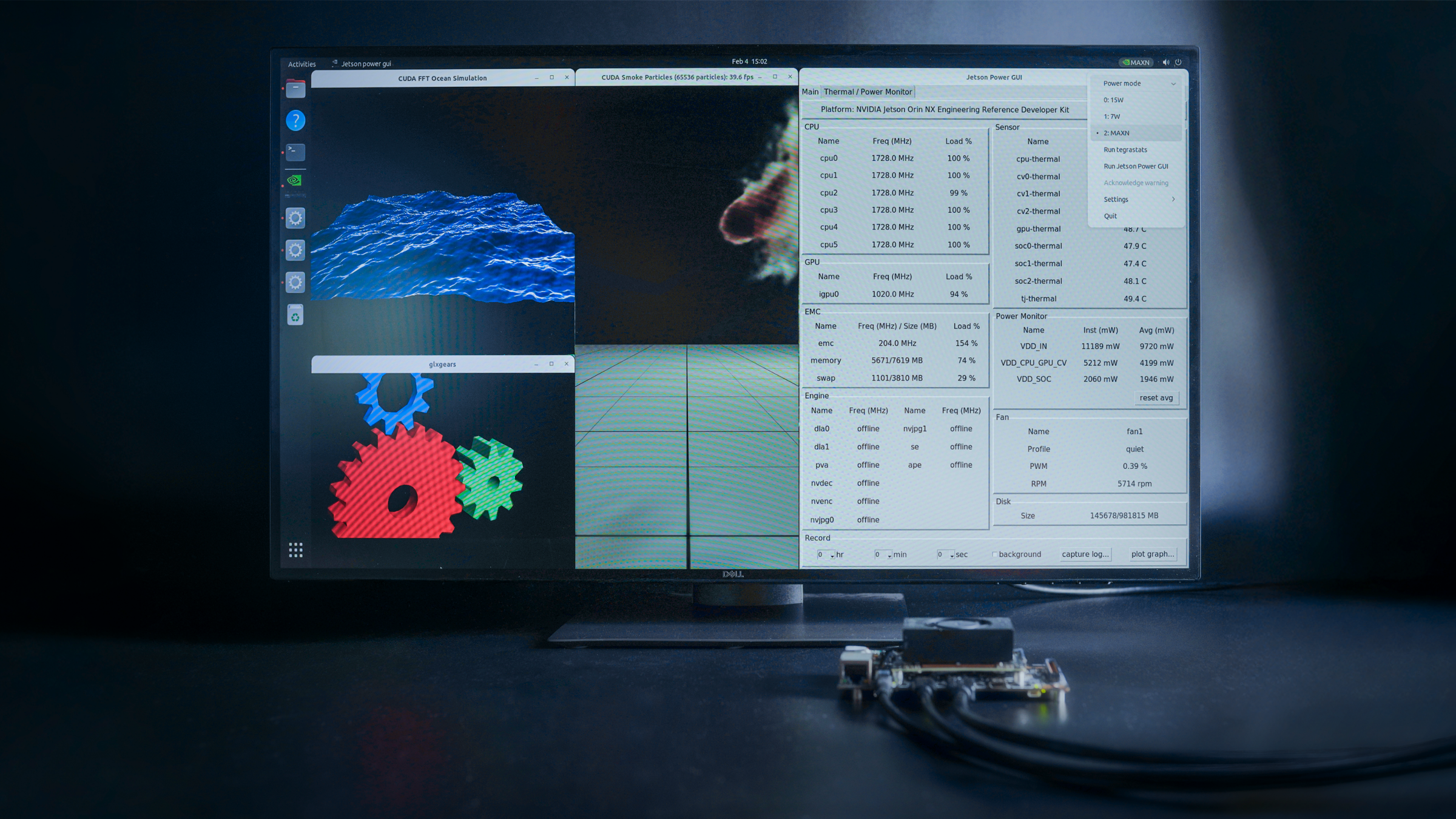Antmicro’s experience with AI vision solutions spans across FPGA, embedded GPU and dedicated ASIC accelerators, around which we had built many open source hardware projects. Besides our hugely successful open NVIDIA Jetson/Orin hardware, most notably the Jetson Nano/TX2 NX/Xavier NX Baseboard, as well as our Snapdragon baseboards and Coral platforms, we have been developing a range of FPGA devkits such as the UltraScale+ Processing Module and the Zynq Video Board which complement our extensive FPGA work.
In a relatively new evolution of its hardware strategy, the FPGA vendor Xilinx (now part of AMD), much like NVIDIA before them, has started to build its own Systems-on-Module (SoMs) around their FPGA SoCs. The Kria K26 SoM is the first of its kind, aimed at hardware accelerated vision AI and video analytics solutions and using the very familiar UltraScale+ which we have employed in a large number of projects, making it a perfect target for Antmicro’s next open hardware platform - a customizable, open source Kria K26 Devboard.

Why FPGA SoC-based vision solutions
FPGAs offer unprecedented flexibility, latency and power for some of the most demanding machine vision applications which we have been building for customers in space, medical, broadcasting, defense and other industries.
Custom video processing blocks instantiated in the FPGA can be optimized for latency, bandwidth and parallel processing capabilities. Programmable logic also enables precise frame synchronization in multi-camera setups, which is crucial for stereovision and obstacle recognition systems. Combining this with hard blocks in an FPGA SoC - be it fast, multi-core ARM or RISC-V CPUs, IO or dedicated ASIC accelerators - can yield a perfect combination of power and flexibility, but also demands cross-competence between hardware and software to get it right.
That’s why FPGA SoCs like UltraScale+ are used in so many of Antmicro’s projects - they match our software-driven hardware mindset and are a good use of the company’s broad expertise spanning PCB design and prototyping, software-centric open source-based FPGA tools and methodologies, BSPs, AI pipelines and OTA systems, and royalty-free, open source FPGA IPs and accelerators.
AMD Xilinx Kria K26 SoM overview
The Kria K26 SoM is based on a custom Zynq UltraScale+ MPSoC (XCK26), which includes the following:
- quad-core 64-bit ARM Cortex-A53 applications CPU at up to 1.5Ghz
- dual-core 32-bit ARM Cortex-R5F real-time CPU at up to 600MHz
- ARM Mali-400MP2 3D Graphics Processor
- 4GB of 64-bit DDR4
- 512 Mb QSPI
- 16 GB eMMC
- 64 Kb EEPROM
- TPM2.0 security module
As far as video processing capabilities are involved, the SoC includes the so-called VPU - video processing units - capable of handling up to 32 H.264 / H.265 streams along with 256K logic cells for developing custom accelerators and interfaces.
Open source Kria K26 SoM carrier board
To enable extremely compact robotics and video accessory designs, Antmicro’s open source design comes in a 30% smaller (118x100mm) form factor than the original Xilinx devkit as well as multiple powering options. Despite additional features and the smaller size, Antmicro still managed to fit the design on an affordable 8 layer board without using the costly HDI technology, in what appears to be the first open hardware devkit for the K26 on the market to date.
The board can be powered from multiple sources - you can choose from USB-C Power Delivery, PoE and a standard DC Jack. The power delivery controller is included on a new FTDI chip (FT4232HPQ) which also serves as a JTAG and debug interface, saving significant space on the PCB.
Antmicro’s Kria K26 Devboard can also be used as a one cable video processing solution. The devkit can be powered through the Ethernet connector using 802.3at Power Over Ethernet. The same connector can be simultaneously used for streaming RTSP video signals.
The devkit features numerous I/O interfaces that should match the needs of typical AI applications. There is DisplayPort 1.2a output that can display up to 1080p@60Hz, and upgraded USB Hub matching the latest standards, with four USB 3.2 Gen1 ports for peripherals like USB cameras, additional sensors or any other I/O you may need. The next addition is an M.2 connector (key E) for optional WiFi and Bluetooth connectivity that will expand the possible use cases even further.
The debug console and the JTAG are conveniently available on the USB Type-C connector. Of course Gigabit Ethernet is also included, as well as PMOD and SD 3.0 (microSD UHS-1) as a boot drive.
The board includes a 50-pin camera connector which exposes two 4-lane MIPI CSI-2 interfaces. This camera connector is electrically compatible with a broad range of open source video accessories created by Antmicro, including (but not limited to):
Integration of any new custom video interfaces can be thus performed by means of simple and easy-to-build adapters. As usual, the K26 baseboard board has been released on GitHub, so for any level of detail you can even refer to the design files themselves.
Building UltraScale+ based products, with Linux, Zephyr and AI inside
A good recent example of how UltraScale+ can be used to build complex products is the hardware storage accelerator project Antmicro has been involved with with Western Digital, recently presented at Linux Plumbers Conference.
With custom Linux and Zephyr RTOS software running on the Cortex-A and Cortex-R cores respectively and inter-core communication using OpenAMP, as well as open source hardware accelerators in the FPGA using TVM project’s VTA, the system showcases how the heterogeneous compute capabilities of UltraScale+ can result in a very efficient system tailored to the specific needs of the application.
The open source Kria K26 Devboard, coupled with Antmicro’s hardware, software and FPGA engineering services can help kickstart advanced product development, starting with a proof-of-concept using our open source hardware and accessories and leading up to a fully customized hardware platform.
Reach out to us at contact@antmicro.com if you’re interested in utilizing Antmicro’s FPGA SoC development experience and the adaptive features of our open source AMD Xilinx Kria baseboard for custom applications, including edge AI, robotics/machine vision, broadcasting, and more.



